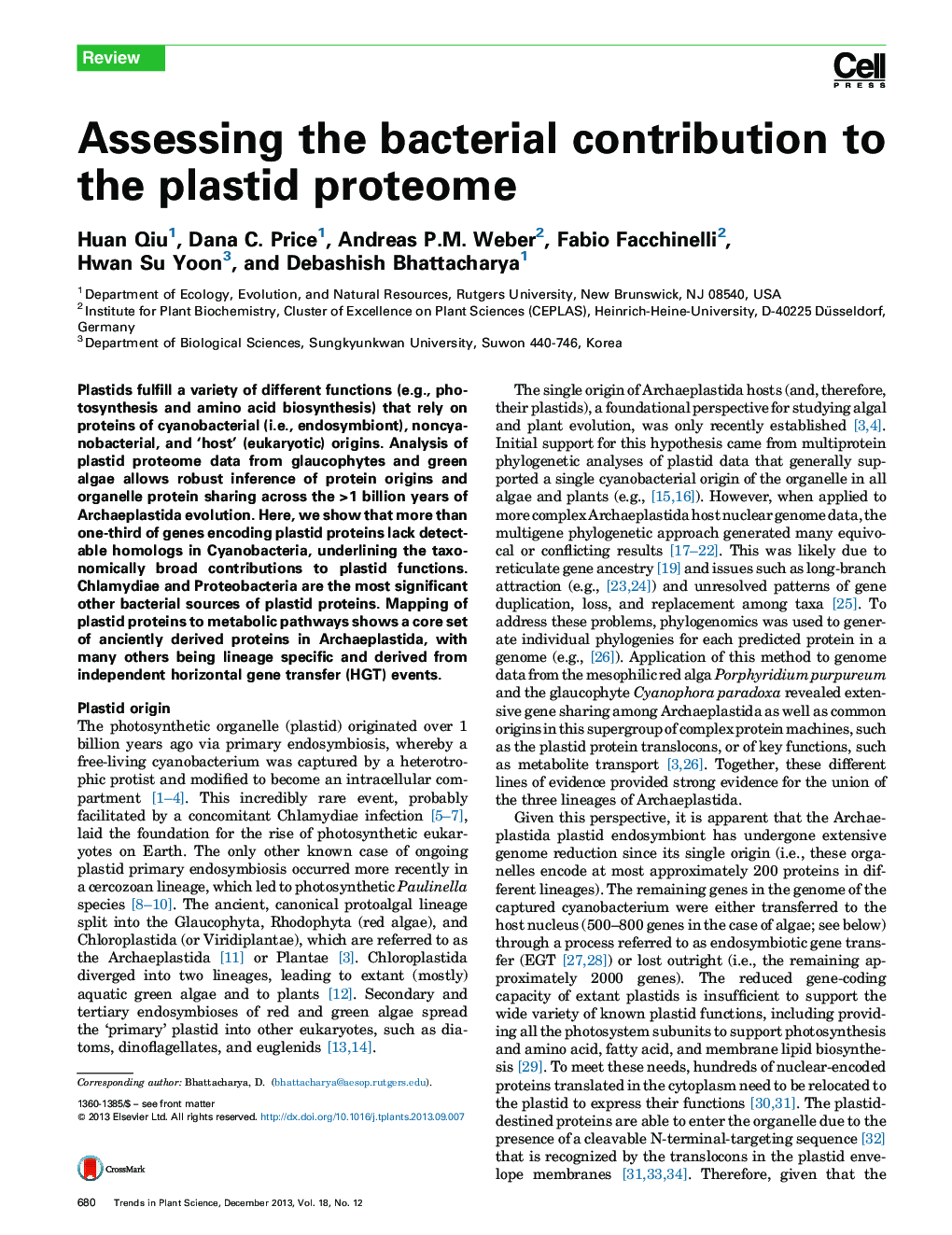| کد مقاله | کد نشریه | سال انتشار | مقاله انگلیسی | نسخه تمام متن |
|---|---|---|---|---|
| 2826081 | 1162200 | 2013 | 8 صفحه PDF | دانلود رایگان |

• All plastids share a single common ancestor that captured and harnessed the cyanobacterial endosymbiont.
• Plastid proteomes have complex phylogenetic origins that go far beyond the endosymbiont coding capacity.
• This complexity reflects independent evolution of the plastid in algae and plants as a site of derived host cell functions.
• Phylogenomic analysis shows that 25% of the plastid proteome is inherited, whereas 10% is acquired through horizontal gene transfer.
• Chlamydiae and Proteobacteria constitute the most significant noncyanobacterial sources of plastid proteins.
Plastids fulfill a variety of different functions (e.g., photosynthesis and amino acid biosynthesis) that rely on proteins of cyanobacterial (i.e., endosymbiont), noncyanobacterial, and ‘host’ (eukaryotic) origins. Analysis of plastid proteome data from glaucophytes and green algae allows robust inference of protein origins and organelle protein sharing across the >1 billion years of Archaeplastida evolution. Here, we show that more than one-third of genes encoding plastid proteins lack detectable homologs in Cyanobacteria, underlining the taxonomically broad contributions to plastid functions. Chlamydiae and Proteobacteria are the most significant other bacterial sources of plastid proteins. Mapping of plastid proteins to metabolic pathways shows a core set of anciently derived proteins in Archaeplastida, with many others being lineage specific and derived from independent horizontal gene transfer (HGT) events.
Journal: - Volume 18, Issue 12, December 2013, Pages 680–687